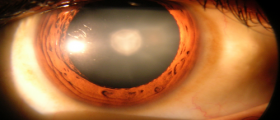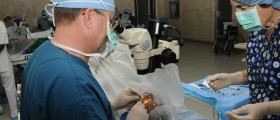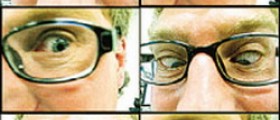
The cataract is a clouding of the lens (organ of the eye) which is normally transparent and clear. Blurred vision is what occurs and this can interfere in normal process of reading, driving etc. The condition basically affects distance vision. The process develops gradually and in the beginning it does not affect eyesight. But after initial period it leads to serious loss of sight which eventually leads to an operation. This rather simple and effective operation is nothing for a person to worry about.
The disease develops slowly. Generally there is no pain or irritation of any kind. The so called "cloudiness" at first may partially involve the lens so the patient is not aware of the problem. In time as the process extends to the rest of the lens as passage of the light is becomes more and more blocked. This finally results in total impairment and definite dimmed vision. Persons can experience problems with night vision and notice halos while watching lights. He/she may change eyeglasses or lenses more often and even a double vision can occur. The light from the sun or lamps might seem to be brighter than usual or even too bright to be looked at. This can lead to accidents while driving or affect daylight activities. The doctor must be extremely careful in discovering a so called hypermature cataract since this is the only type which can lead to inflammation, pain or headache.
The cataract can affect one or both eyes. The second case is related to injury or trauma when cataracts develop on both eyes at the same time. The lens is involved partially or totally. This part of the eye has a function of focusing the light that passes through the cornea and pupil and producing clear and sharp images on the retina. The cataract is responsible for making the lens cloudy hence scattering the light and reducing the sharpness of the images on the retina. The result is blurred vision.
There are three types of cataracts: nuclear, cortical and subcapsular. There is no explanation why the lens change during lifetime. Some scientists assume the process happens due to free radicals. Smoking and exposure to ultra violet light are two sources that are possible culprits. Certain changes in protein fibers of the lens are also considered to lead to the condition. Some people are born with cataracts or develop the condition in childhood. These cases of congenital cataracts may be result of rubella infection of the mother during pregnancy. These forms of cataract may be caused by certain metabolic disorders as well.
















Your thoughts on this
Loading...